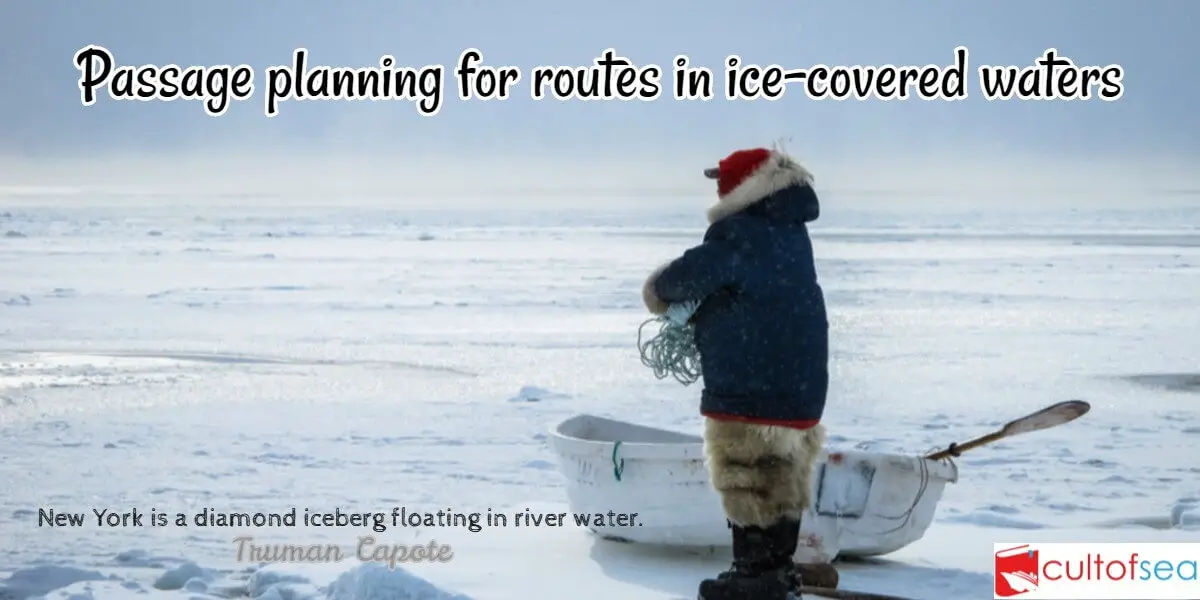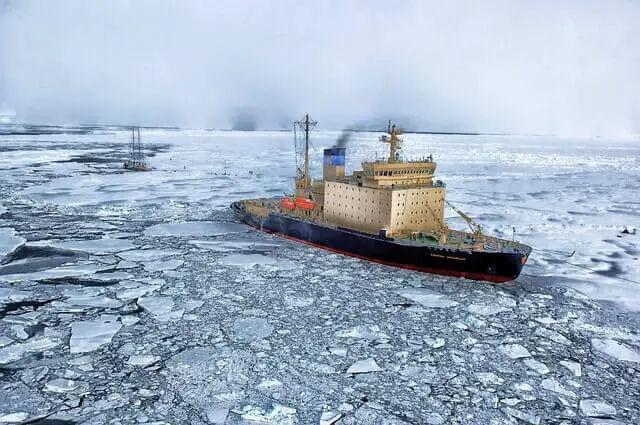Why is magnetic compass useless in higher latitude or Polar Regions? The magnetic compass depends on the horizontal component of the magnetic field of the earth. As the north magnetic pole is approached in the Arctic, the horizontal component becomes progressively weaker until at same point. The magnetic compass becomes useless as a direction measuring device. The magnetic compass will not settle unless the ship remains on the same heading for a prolonged period, so it can be considered almost useless anywhere north of Lancaster Sound.So is it possible to use a magnetic compass in higher … [Read more...]
Passage Planning in or near ice limit
Passage planning for routes in ice-covered waters is based on standard navigational principles for passage planning(International Maritime Organization Resolution A. 893(21) adopted on 25 November 1999, Guidelines For Voyage Planning.Passage planning takes place in two phases:Strategic, when in port or in open water Tactical, when near or in ice-covered watersStrategic Phase Appraisal The procedure involves the use of all information sources used in open water passage planning, plus any others that can be obtained to give a complete picture of the ice conditions possible. … [Read more...]
Precautions while Entering and Navigating within Ice Limits
Precautions you will take while entering ice limit:The route recommended by the Ice Superintendent through the appropriate reporting system i.e. ECAREG or NORDREG, is based on the latest available information and Masters are advised to adjust their course accordingly. Do not enter ice if an alternative, although longer, open water route is available. Enter the ice at low & speed to receive the initial impact: once into the pack. Increase speed gradually to maintain headway and control of the ship, but do not let the speed increase beyond the point at which she might suffer … [Read more...]


